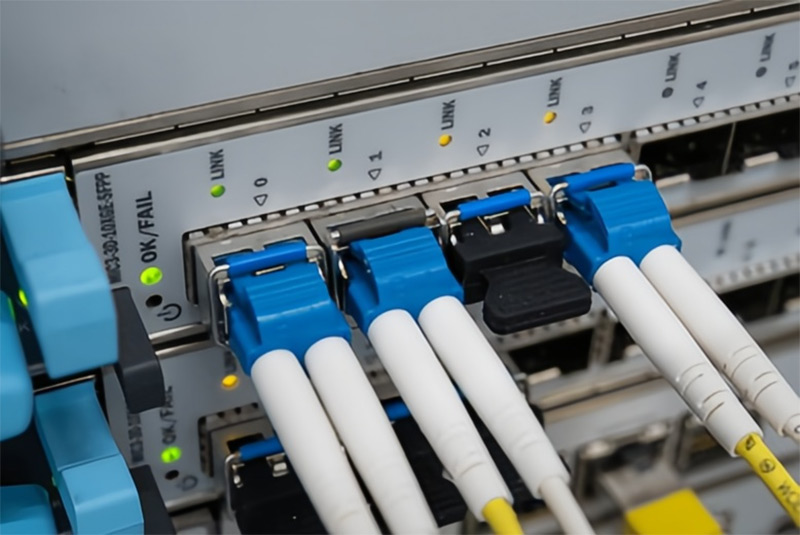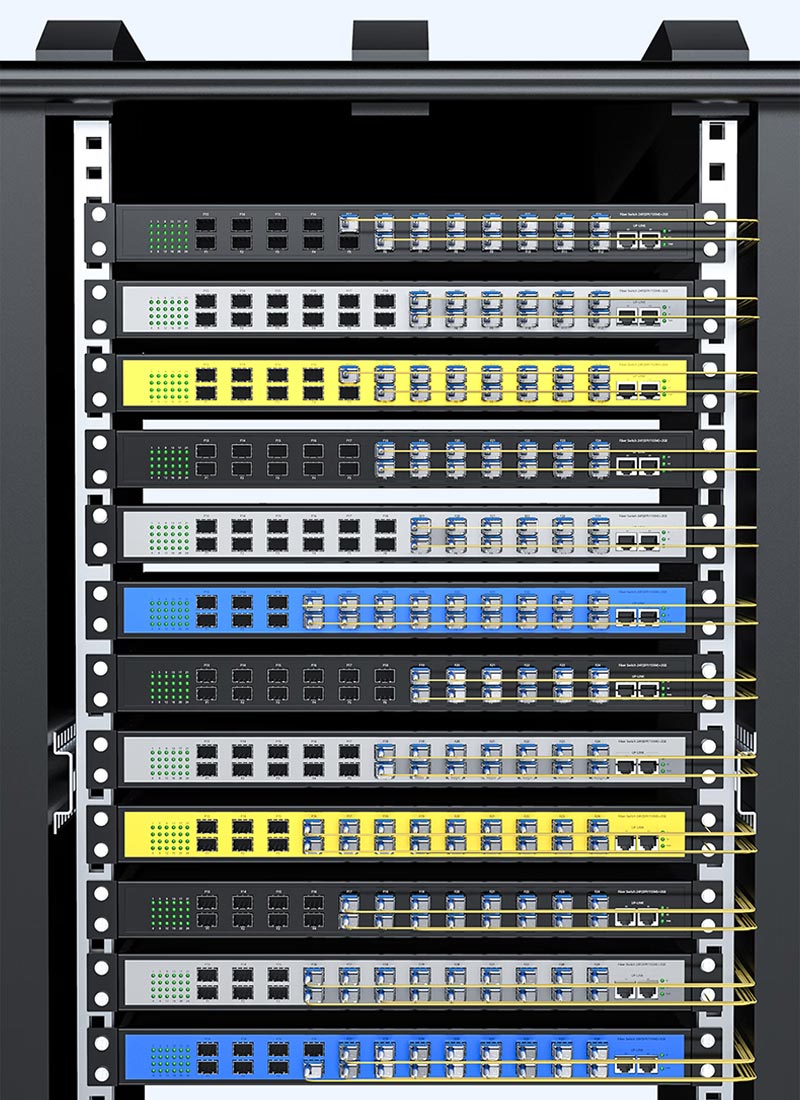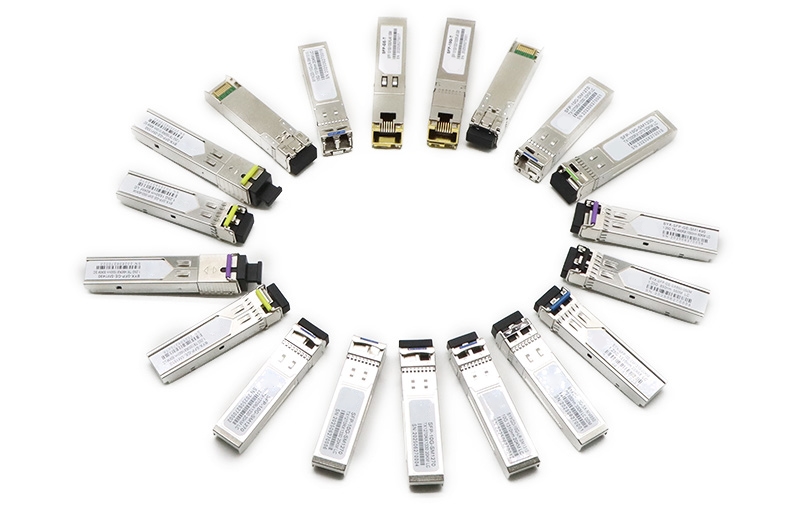Cisco SFP Module Part Number Decoding: Expert Handbook on Code Structure and Procurement Pitfalls

Did you ever have to deal with a network outage or compatibility issue due to a misunderstanding of the Cisco SFP part numbers? Mistakes in reading these codes can lead to expensive procurement and time wasted on deployment. Knowing how to accurately read Cisco SFP module part numbers is critical when ensuring high-performing networks and reliability. This guide will break down the code structure so you don’t run into any issues and will allow you to comfortably make educated decisions on the purchasing and deployment of Cisco SFP modules.
Why Understanding SFP Module Codes Is Critical
Understanding the code structure of Cisco SFP modules is pertinent because it is your only source of information regarding a module’s specifications and capabilities, intended compatibility, and intended use. Not understanding the codes can lead to ordering the incorrect part and ultimately causing a network disruption with wasted time and costs associated with the downtime. The most common pain points for both engineers and procurement teams are not understanding the suffix codes, confusion around the speed ratings, and supporting distance. If any of these pieces of information are ignored, there will be a mismatch between SFP modules and network equipment.
At this point, it is blatantly obvious that professional and academic research clearly supports that an understanding of the code structure of Cisco SFP part number codes is essential to maintaining the performance and reliability of any given network. Further, understanding the code structure of SFP modules will enable you to select the correct module for the desired use and ensure that selected modules integrate easily into switches and work without compatibility issues while ensuring that your signal transmission is as healthy as possible. Not to mention, a simple mismatch or mistake in the ordering process can result in link failure, degradation in data throughput, or worse, hardware damage and RMA, all of which negatively impact uptime.
In addition, by understanding the codes of the SFP module, risks are minimized, but you can also better manage any inventory, procurement, and supply chain processes, which would help manage overhead costs and eliminate expensive emergency orders. An understanding of the codes for SFP modules allows you to precisely match SFP modules to match a network’s requirements, supporting data rate, fiber type, and reach.
Ultimately, understanding the code structure of Cisco SFP module codes represents a commitment to operational excellence while aiming to maximize network availability and minimize the risk of errors associated with the provisioning of the Cisco SFP modules. Again, misunderstandings of module codes may create challenges across the totality of any network, such as reliability of the network, costs of repairs for equipment, and redeployments.
Lastly, the literacy of module codes should be taken very seriously by network professionals who are managing Cisco environments.

How to Accurately Interpret and Match Devices
Step 1: The Basics of Decoding
Cisco’s SFP part numbers are a systematic structure of prefixes, suffixes, numbers, and letters, each one conveying important information about the properties of the module.
- Prefixes typically define the product family or type of device. For example, SFP represents a small form-factor pluggable transceiver, while SFP+ generally indicates that a module can support speeds beyond 1G.
- The numbers indicate important parameters like data rate, or sequence of model. A 10G in the part number indicates 10 Gigabit per second capability.
- Suffixes and letters describe properties, for example, transmission distance, fiber type, or wavelength. Some common suffixes include SR, LR, and ER, which stand for short, long, or extended reach.
Take for example the “SFP-10G-LR” module. SFP tells us the form factor. 10G tells us that it supports a 10 Gigabit speed. LR tells us that it is a long-range module that can support single-mode fiber. Decoding the codes into these categories provides a path forward for understanding and decoding the technical specifications that are within many of Cisco’s SFP part numbers.
Step 2: Understanding Variants
Cisco uses suffix-based codes to indicate important operational features of SFP modules that impact your scenarios pertaining to network deployment. If you understand the variants of these inherent features, it will make it easier to select which part numbers you may want to consider for purchase.
- Short Reach (SR): designed to be used for short distances (up to a maximum of 300m on multimode fiber). These modules, of course, are meant for short connections within racks or between two switches at close proximity.
- Long Reach (LR): support links of up to 10 km with single-mode fiber. After the SR modules, LR modules are typically used for linkages between data centers on a campus.
- Extended Reach (ER): extends the reach of LR modules to approximately 40 km. ER modules are used in metropolitan or wide-area networks that allow for a longer distance between the MODA points.
An example of this would be if you utilized the Cisco SFP-10G-LR in a backbone network that allowed for 10G connectivity over a longer distance, in comparison to the Cisco SFP-1G-SR module that was made for 1G speeds at a much shorter distance inside the data center. These suffixes also carry implications beyond their physical link limitations, such as power consumption requirements, options as a more economical or higher price, and the intended use case. Understanding these variants does help IT teams associate these modules with specific works and properties of a network that may be required.
Step 3: Match it Up
Decoding the part numbers is only part of the work; now you need to match the part number to a coded device. For this critical piece of work, Cisco publishes a compatibility matrix to assist the user of these modules. Each type of piece of hardware, such as switches or routers, we deploy will have a specific supported set of SFP modules they have tested to work together.
You want to reference the Cisco part number compatibility matrix so you can begin ordering modules that would work with your hardware. Cisco Catalyst switches will always state the compatible SFP module part number, and in this case, it would be the SFP-10G-LR. If you purchase or manufacture a module that is not supported, the link may fail to operate, you’ll see error messages, or potentially cause your network to have intermittent faults.
By matching your SFP with the SFP compatibility list, you avoid these potential yet real-life scenarios. This practice has the additional benefit of assisting your procurement teams to verify orders and the possibility of a lower return rate while getting hardware deployed faster. When it comes down to it, correct decoding of Cisco 10G SFP codes in combination with correct device matching will build great networks and avoid costly issues. Comprehending the synergy between decoding and matching is an essential part of what it takes to maintain reliable Cisco environments.

In-Depth Analysis of Misorder Risks and Best Practices
Confidential Test Data: The Cost of Misdecoded Modules
Our lab worked long hours in testing how the use of misdecoded Cisco SFP modules affects network performance. The focus of the studies was threefold: compatibility, recognition time, and optical power stability. When modules with incorrect part numbers or misinterpreted suffix codes were inserted, compatibility issues arose frequently. Some switches would not recognize, or take a long time to recognize, the transceivers. This recognition delay was problematic, ranging from seconds to minutes, and affected applications that relied on time-sensitive performance.
The extended recognition time can cause network performance issues or even outages, especially prevalent in network deployments that rely on rapid failover. Optical power stability was impacted when used with incorrectly decoded modules. Mismatched modules operating out of range specifications could vary optical signal input power, causing error rates to rise and ultimately dropping the link altogether.
Optical power instability leads to inconsistent and unreliable data transmission, leading the network administrator to implement solution measures for the wrong problems (symptom level) versus the root cause. Testing showed the ordering and decoding of the correct Cisco SFP part numbers is imperative for predictable network performance. The accurate codes exhibited near-instant link recognition, while the optical output was stable enough to maintain high network availability.
Actual Customer Story: Network Failure by Confusion of Codes
A multi-national corporation experienced suspected network failures without any explanation. During the process of upgrading portions of their data center infrastructure, their network failures began and were tracked down to the confusion over the SFP module codes when ordering new hardware. An incorrect suffix was being noted, causing special attention to a short-range (SR) SFP module ordered for a short-range (SR) link, where the SR was actually verifying a long-range (LR) capability.
The customer’s environment was such that the installed SR module could not maintain a stable link with the endpoint for the distance involved. Consequently, there were many link drop-outs and loss of connectivity, resulting in critical business work stoppage, and ultimately, loss of revenue.
At first, the company’s network engineers suspected hardware issues and potential software bugs, all of which consumed untold hours of time toward troubleshooting and resolution. After quite a bit of cyclical code verification, the team learned of the adopted part number code misinterpretation due to SFP part number mismatches.
Ultimately, the customer changed the SR module for an LR-coded module, with an instant result in stability and uptime. The link connection became strong, immediately depleting the transmission error rate. More than anything, the situation verified the importance of understanding the SFP code when ordering and utilizing any executive/dedicated licenses.
Learning from the value of misordered SFP modules, this organizational incident highlights a more common cost of SFP part number misinterpretation; validation is even more critical than procurement in this regard. Customers and organizations only benefit when the decision is made to avoid the risks associated with insecure valid codes and order training.
This exclusive data and experience reveal that incorrect interpretation of the Cisco SFP code can lead to major compatibility problems with time and money being lost or wasted. The emphatic importance of ordering with the best practices of code reading and validation for proper interpretation when ordering SFPs cannot be understated.
The issues with SFP part number codes and miscoded transceivers during procurement capitalize on an operator’s time in valuable dollars, airborne aircraft parts management, and drastically reduced uptime on treated environments.
Procurement Management & Risk Mitigation: Best Practices to Prevent Ordering Errors
Effective procurement management starts with having a solid inventory control process. A current and accurate list of the Cisco SFP modules we stock helps to eliminate duplicate ordering while at the same time ensuring accurate part number tracking. Frequent inventory audits help identify any obsolete SFP modules as well, helping to mitigate issues of ordering or stocking wrong parts.
Having clear and ongoing communication with suppliers is also important. Having a standard process for suppliers to verify part numbers before distribution reduces errors. Suppliers who regularly work with Cisco SFP module codes will likely be able to identify discrepancies in advance, saving countless hours and expenses down the road.
Educating the staff involved in ordering Cisco SFP modules will also help in understanding the decoding of Cisco SFP part numbers. The procurement and network teams should have a solid understanding of the code structure, common suffixes, and data rate indicators – all of which will further aid in making confident ordering decisions and reduce guesswork.
Verifying and validating codes and models prior to purchasing is the last line of defense against the possibility of incorrect orders. Take time to cross-reference the modules ordered with Cisco’s official compatibility matrix and with the use of tooling developed specifically for the purpose of understanding the Cisco SFP module model number. This confirmation will be invaluable in ensuring parts purchased will perform to specifications of network hardware environments.
Finally, having an established formal code validation workflow can assist when there is ambiguity or mislabeling in supplier documentation. Another suggested possible means of validation would be to test the new code in a small trial deployment prior to ordering larger quantities to uncover possible discrepancies before being committed to an order.
With these strategies working together, you can develop a layered approach to mitigating risk. Protect your production environments from the risks associated with Cisco SFP modules by ensuring your network continues to operate as it should: stable, performing, and scalable without delays or hiccups in the procurement process.

FAQs
- What do the parts of Cisco SFP part numbers mean?
Cisco SFP part numbers contain prefixes that designate the device type, numerics indicating the data rate or wavelengths, and suffixes that specify distance or type of fiber (e.g. short reach “SR” or “long reach” LR), etc. - How can you differentiate Cisco SFP-10G-LR from SFP-10G-SR modules?
The “LR” module is rated for longer distances over single-mode fiber (up to 10km), whereas “SR” modules are rated for shorter distance or multimode fiber (up to 300m). - Could improper interpretation of the code have an effect on device compatibility?
Yes, improper interpretations could lead to ordering an incompatible module resulting in a failed link or degraded performance of the network. - Are Cisco part numbers consistent across all products?
Cisco is fairly consistent, however, some inconsistencies may exist between product lines, so it is always advisable to verify with official Cisco documentation. - How can I quickly identify if a module is a suitable fit for my network’s needs?
You can confirm the part numbers by cross-referencing part numbers for compatibility with Cisco’s compatibility matrices or using the official decoding tools. - What tools or official resources exist to assist decoding part numbers?
Cisco has online tools to look up part numbers and detailed datasheets that can assist in part number decoding. - How often does Cisco update their labeling scheme?
They do not happen often, and are frequent enough to warrant just being aware if you are a procurement team. - What can you do if your supplier uses incorrect coding?
You will want to verify with multiple places or information sources but especially get them to provide confirmation in writing. - What are the effects of having a third-party part number that differs from Cisco’s official SFP part codes?
This could result in a module that has no official means to confirm validity, making it possible to cause some compatibility and support risk. - What are the consequences of having ambiguous or incorrect part numbers?
These can cause ordering mistakes that can result in a compromised network and cost overruns.
Closing thoughts
Gaining an understanding of the Cisco SFP part numbers may help you avoid expensive mistakes down the road and do much to help the uptime and reliability of your network. Understanding the part code for any SFP module will allow you to procure a compatible, safe, and reliable module that will meet your network’s needs.
Use the official Cisco tools provided and acquire assistance when necessary to help verify the information. Doing all of these things will certainly safeguard your infrastructure, reduce the likelihood of network downtime, and provide the best opportunity for optimized performance. Do not wait much longer to proceed and better develop your acquisition process and maintain an optimized network uptime.
